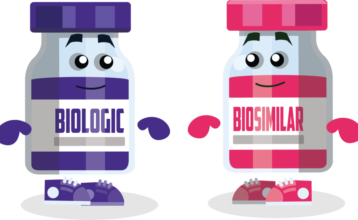Star Ratings Critical to Medicare Prescription Drug Plans
- By
- Tom Modeen
Star ratings were developed by CMS in 2009 as an efficient way to help patients compare quality among Medicare Advantage Plans. CMS now uses star ratings as a financial incentive system to reward high quality achieving plans with bonuses and rebates. Each year, all Medicare Advantage Drug Plans (MAPDs) are rated on a scale of 1 to 5 based upon how the plan has performed in helping members stay healthy.
Plans with scores of 4 or greater receive bonus payments and incentives. Plans achieving a 5-star rating are allowed to market all year  round, not just during the open enrollment period. In addition, patients can switch to a 5-star rated plan at any time.
round, not just during the open enrollment period. In addition, patients can switch to a 5-star rated plan at any time.
CMS will not allow patients to enroll in low scoring plans and effective 2015, CMS can terminate contracts for plans that measure poorly in the star ratings system.
Due to the Affordable Care Act, plans and PBMs can now retain a percentage of their profits. A large factor in generating profits and bonus revenoes, is to increase the number of lives they serve. The MADPs take this very seriously.
Pharmacy Impact on Plan Scores
There are two areas where community pharmacies can impact plan star ratings:
1. Improving medication adherence for diabetic medications, statin therapies and hypertension drugs.
2. Providing point-of-care interventions to address gaps in medication therapy. These interventions include patients on diabetic medications and high risk medications for the elderly.
CMS has “triple weighted” adherence and addressing gaps in medication therapy in the plan score assessments. The measure accounted for 22% of a plan’s score in 2012 and has grown exponentially since then.
Why Community Pharmacies Should Care About Star Ratings
Although star ratings are generally associated with plan performance, plans are using insurance claim data to issue their own scores to pharmacies. Chains have taken the necessary initiatives to assist plans in achieving higher scores and thereby, capturing more patients.
Low scoring pharmacies run the risk of losing important network contracts and being excluded from enrollment in Preferred Provider Networks.
The pressure on the plans to deliver quality patient care has moved downstream to pharmacy providers to be partners in this initiative.
Star ratings are a critical factor in pharmacy reimbursement and retaining patients. Future sustainability is based upon putting a pharmacy action plan in place.
Action Plan for Pharmacy
The first order of business is to educate your staff on the Star Ratings System and what your pharmacy must do to improve the quality of care. Post orientation, the guidelines are as follows:
- Potential drug interactions and contraindications should be a focus.
- Maintain consistent medication counseling of patients.
- Closely monitor and counsel elderly patients on high risk medications.
- Complete MTM (Medication Therapy Management) cases.

- Complete outcome-based MTM alerts.
- Implement a system to meet medication adherence goals.
- Offer medication synchronization services to patients.
- Improving lines of communication with physicians.
Adaptability:Key to Sustainability
The present and future impact of the star rating system should be taken seriously as the pressure on the healthcare system mounts to deliver  higher quality care at significant savings. This is not going to change. It is time to heed the call to action and provide a healthier future for your patients and pharmacy practice.
higher quality care at significant savings. This is not going to change. It is time to heed the call to action and provide a healthier future for your patients and pharmacy practice.
Adaptability IS the key to sustainability!




